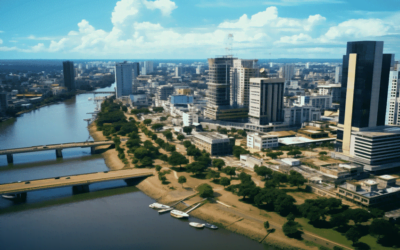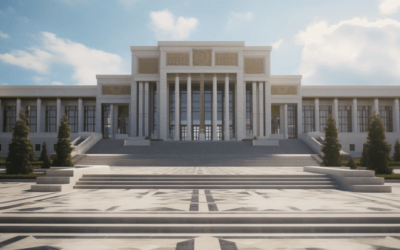Hey there, if you’re reading this, you’re probably as curious as I was when I first started exploring the fascinating world of drones. You’re on a quest to unravel the mysteries of “Romania Drone Laws.”
It’s a topic that can seem like a maze, with legal jargon and regulations that might leave you scratching your head. Don’t worry; I’ve been there, and I get it. So, let’s dive in and navigate these regulations together.
You see, I was just like you, searching for answers, and I embarked on a journey to understand Romania’s drone laws. I’ve delved into the intricacies of these regulations, and I’ve got the scoop you’re looking for.
From understanding the different categories of drone operations to the rules for hobbyists, commercial operators, visitors, and government entities, I’ve done the research so you don’t have to.
So, stick around because I’ve got the lowdown on “Romania Drone Laws” that you’ve been searching for. Whether you’re a hobbyist, a commercial operator, a visitor, or even part of the government, this article has got your back. I’m here to provide you with insights, guidance, and everything you need to navigate the Romanian drone regulatory landscape with ease. Let’s get started, shall we?
- Regulatory Authorities in Romania
- General Rules for Flying Drones in Romania
- Drone Categories and Requirements
- Hobbyist Drone Operators
- Rules for Commercial Drone Operators
- Romania Rules for Tourists and Visitors
- Romania Government Drone Operators
- Additional Considerations
- Romania Drone Laws: Foreign Operator Guidelines
- Final Thoughts on Romanian Drone Laws
- Frequently Asked Questions About Romanian Drone Laws
Regulatory Authorities in Romania

Before we dive deep into Romania’s drone laws, let’s get acquainted with the regulatory authorities that steer the course. These entities play a significant role in shaping and enforcing the rules that drone enthusiasts, operators, and visitors in Romania must adhere to.
The role of the Romanian Civil Aviation Authority (AACR)
The Romanian Civil Aviation Authority, or AACR for short, is like the guardian of the Romanian skies. They oversee and implement the drone regulations that ensure the safety and responsible operation of unmanned aerial systems within the country.
Think of them as the referees, ensuring everyone on the field follows the rules. AACR’s primary focus is on keeping the skies safe, and they’re instrumental in enforcing European Union regulations in Romania, too.
The influence of the European Union Aviation Safety Agency (EASA) on Romanian drone regulations
Now, it’s time to talk about the European Union Aviation Safety Agency, better known as EASA. They’re like the captains of a larger team—the European Union. Since Romania is a part of the EU, EASA’s regulations have a substantial impact on drone laws here.
They set the standards that all member countries, including Romania, must follow. This means that while Romania has its own specific drone rules, it must also adhere to the overarching EU regulations set by EASA.
So, in the world of drones, Romania plays its part on the European stage, adhering to both national and regional drone regulations to ensure safety and consistency.
Also Read: Qatar Drone Laws 2024
General Rules for Flying Drones in Romania

Now, let’s get into the nitty-gritty of the “Romania Drone Laws” and explore what you need to know when you’re up in the air. Understanding the general rules for flying drones is crucial to ensuring safety and compliance.
Categories of drone operations: Open, Specific, and Certified
When it comes to flying drones in Romania, the first thing to grasp is the categories of drone operations. We have the Open, Specific, and Certified categories. Think of them as different levels of a video game. In the open category, the rules are less strict.
This is where most recreational pilots and hobbyists fall. It’s all about keeping it fun and safe. Specific category operations require authorization because there’s a bit more complexity involved.
Finally, the Certified category is like the expert level, typically reserved for drones with a high level of risk. AACR takes these categories seriously to ensure every drone pilot operates safely.
European Union Regulation 2019/947 and its implementation by AACR
Now, picture the European Union Regulation 2019/947 as the epic rulebook for all EU countries, including Romania. This regulation serves as the baseline, setting the stage for drone operation rules across the EU.
The Romanian Civil Aviation Authority, or AACR, steps in to make sure these rules are implemented and followed to the letter within the country. In a way, AACR is like the local enforcer of a bigger, EU-wide game, ensuring everyone plays by the same rules.
Key operational rules under EU regulations
As you venture into the drone world in Romania, there are some critical operational rules you should be aware of. For instance, maintaining a visual line of sight (VLOS) is a key requirement to keep track of your drone.
You don’t want it to disappear into the wild blue yonder. Also, remember the 120-meter height limit. You don’t want to reach for the stars with your drone because safety always comes first. These are just a few of the key operational rules under EU regulations, but we’ll dive deeper into the specifics as we go on.
Also Read: Portugal Drone Laws 2024
Drone Categories and Requirements

Understanding drone categories and their specific requirements is essential for every drone enthusiast. It’s like knowing the different lanes on a highway; you need to be in the right one to reach your destination safely and legally.
Explanation of the Open, Specific, and Certified categories
Let’s break it down. The Open, Specific, and Certified categories are the three lanes in the drone world. In the Open category, it’s like the “easy” mode. It’s designed for drones that have minimal risks, and the rules are relatively relaxed.
Then we have the specific category, which is more like “intermediate” mode. This is where drones with higher risks or complex operations come into play. Here, you need special permissions. Finally, there’s the Certified category, which is the “expert” mode.
Drones here are typically heavy, and their operations are challenging. To play in this lane, you must be certified, and your drone needs a “license.” Each category is like a level of responsibility, and it’s crucial to know which one your drone belongs to.
Weight and operational limitations for each category
Now, let’s talk about weight. The weight of your drone plays a crucial role in determining which category it falls into. For Open category, your drone should weigh less than 25 kilograms. In a Specific category, the weight can vary, but it’s more about the level of risk.
If you’re heading into certified territory, you’re likely dealing with a drone that’s on the heavier side. Operational limitations also vary with categories.
In Open, you have more freedom to roam, whereas Specific and Certified categories come with specific operational restrictions to ensure safety. It’s a bit like having different licenses for different types of vehicles; you need to know what you’re dealing with to follow the right rules.
Also Read: Poland Drone Laws 2024
Hobbyist Drone Operators

For all the drone enthusiasts out there who fly for fun, we’ve got the lowdown on the rules and requirements just for you. Hobbyist drone pilots, you’re about to discover the ropes to safely and responsibly take to the skies in Romania.
Overview of regulations for Hobbyist drone pilots in Romania
Alright, let’s start with the basics. If you’re a hobbyist drone pilot in Romania, you fall under the Open category. This means you get to enjoy a bit more flexibility in your flights. But, that doesn’t mean it’s free-for-all.
There are still some essential rules and regulations that you should keep in mind to ensure safety, both for you and those around you. After all, having fun with your drone is great, but doing it responsibly is even better.
Requirements for hobbyist drone flights, including licenses, registration, Remote ID, and insurance
Now, let’s talk about the practical stuff. If you’re flying your drone for fun and your drone weighs more than 250 grams or has a camera, you need to register it with the AACR. This step ensures that your drone is accounted for and helps authorities keep track of the drone population.
But here’s the good news: you don’t need a special pilot’s license for hobbyist flights, as long as your drone falls under the Open category. Remote ID isn’t mandatory for hobbyists either, which gives you a bit more privacy.
Insurance, on the other hand, isn’t obligatory, but it’s a smart move to consider, especially if your drone costs a pretty penny. So, as a hobbyist, you have the freedom to explore the skies, as long as you remember the rules and maintain a responsible approach to your flights.
Also Read: Philippines Drone Laws 2024
Rules for Commercial Drone Operators

If you’re thinking about taking your drone passion to a professional level in Romania, you’ll want to pay close attention. The rules for commercial drone operators are a bit more intricate, and it’s essential to understand what’s required to soar legally in the business skies.
Detailed regulations for commercial drone operations in Romania
For those venturing into the world of commercial drone operations in Romania, you’re entering a Specific category. The stakes are higher, and so are the regulations. Your operations must be thoroughly planned and meet safety and privacy standards.
You’ll need to get authorization for your flights, and this involves detailed planning, risk assessments, and fulfilling specific criteria set by the AACR. These regulations are designed to ensure that your commercial drone operations are carried out safely and without endangering people or property.
Licensing, registration, Remote ID, and insurance requirements for commercial drone operators
Now, let’s talk paperwork. Commercial drone operators in Romania must hold a Remote Pilot Certificate. This certificate is essential to demonstrate that you have the expertise and skills to operate drones professionally.
Registration with the AACR is a must, even if your drone weighs less than 250 grams. Remote ID is essential for commercial operators, as it helps authorities and the public identify your drone. Insurance, too, is a vital component.
Commercial operators often deal with more expensive drones and complex projects, so having insurance is a smart move to protect your investment. So, if you’re planning to turn your drone passion into a profession, make sure you’re prepared to meet these requirements to ensure safe and legal flights.
Also Read: Peru Drone Laws 2024
Romania Rules for Tourists and Visitors

If you’re a visitor to Romania and you’re itching to fly your drone and capture some amazing shots, you’re in the right place. We’ll explore what you need to know about drone regulations for tourists and visitors in Romania, so you can make the most of your drone adventures.
Information on drone regulations for foreign visitors to Romania
As a tourist or visitor in Romania, you’ll fall under the same drone regulations as Romanian drone enthusiasts. The rules don’t discriminate based on nationality.
You’ll need to adhere to AACR’s guidelines, and it’s crucial to understand which category your drone falls into.
Whether you’re here for sightseeing, photography, or just enjoying the thrill of flying, respecting the local drone laws is a must. So, before you take off, take some time to familiarize yourself with the rules and ensure you’re flying responsibly.
Requirements for tourist drone flights, including licenses, registration, Remote ID, and insurance
The good news is, that you won’t need a special pilot’s license to fly your drone as a tourist in Romania. Registration with AACR is essential for drones weighing over 250 grams or those with cameras.
Remote ID isn’t obligatory for tourists, providing a bit more privacy during your flights. Insurance isn’t a must, but it’s a wise choice, especially if you’re traveling with an expensive drone. It adds an extra layer of security to your adventures.
So, as a tourist or visitor, you can enjoy the Romanian skies with relatively minimal bureaucratic hassle, as long as you keep in mind the key rules and requirements that come with your drone flights.
Also Read: Paraguay Drone Laws 2024
Romania Government Drone Operators

When it comes to government drone operations in Romania, there’s a distinct set of rules and requirements. Government entities have specific responsibilities and purposes for their drone usage, which means they must navigate through a unique set of regulations to ensure safety and security.
Special regulations for government drone operations in Romania
Government drone operations fall under a category that involves crucial responsibilities. These drones are often used for surveillance, law enforcement, and public safety purposes.
Therefore, government entities must adhere to strict regulations to guarantee the safety and privacy of the public. These regulations are tailored to the specific needs of government operations, making sure they can fulfill their essential roles without compromising on safety.
Licensing, registration, Remote ID, and insurance requirements for government entities
Government drone operators in Romania are subject to licensing requirements. This ensures that the individuals responsible for operating the drones are adequately trained and knowledgeable about the specific rules governing government drone flights.
Registration is mandatory, even if the drone weighs less than 250 grams. Remote ID is also a requirement, allowing authorities and the public to identify government drones during their operations.
Insurance is typically not required for government entities, given their unique circumstances. Government drone operations are all about maintaining law and order and ensuring public safety, which means they have a distinct set of rules and requirements that are in line with their crucial role in society.
Also Read: Papua New Guinea Drone Laws 2024
Additional Considerations

As you navigate the drone regulations in Romania, there are some extra aspects to keep in mind to ensure your flights are safe, responsible, and within the law. Let’s delve into these additional considerations that could make a significant difference in your drone operations.
Special exceptions and applications for restricted areas and operations
Sometimes, you might have a unique reason to fly your drone in restricted areas or perform specific operations that deviate from the standard rules. In such cases, you can apply to the AACR for special exceptions.
Whether it’s for a special photography project, research, or other exceptional circumstances, the AACR may grant you permission. It’s important to remember that these exceptions are not guaranteed, and each case will be reviewed on its merits.
So, if you find yourself in a situation where the standard regulations don’t quite fit, consider reaching out to the AACR for guidance on how to proceed within the bounds of the law.
The significance of maintaining visual line of sight (VLOS)
One rule that’s consistent across all drone categories is the requirement to maintain a visual line of sight (VLOS) with your drone. This means you should always be able to see your drone during the flight, ensuring you have full control and awareness of its surroundings.
Flying beyond the VLOS can not only put your drone at risk but also jeopardize the safety of others. So, whether you’re a hobbyist, a commercial operator, or even a government entity, VLOS is a fundamental rule to remember.
It’s the key to safe and responsible drone operations in Romania, as it helps you avoid accidents and conflicts while enjoying the beautiful Romanian landscapes from above.
Drone Registration Process
Drone registration is a crucial step in ensuring that your flights in Romania are legal and safe. Whether you’re a drone operator or a pilot, understanding the registration process is essential. Let’s take a closer look at what this process entails and the different requirements for individuals and legal entities.
Explaining the registration process for both drone operators and pilots
Drone registration in Romania involves two key components: registering as a drone operator and registering as a pilot. Operators are responsible for the drones themselves, while pilots are responsible for flying them.
The process typically begins with operator registration, which includes providing details about the drone, such as its weight, purpose, and technical specifications.
Once this is completed, pilots must register, providing their information and indicating which drones they’ll be flying. This two-step process ensures that both the operator and pilot are accountable for their respective roles in drone operations.
Different requirements for natural persons and legal entities
There are distinct requirements for natural persons (individuals) and legal entities (businesses or organizations) when it comes to drone registration. For natural persons, the process is relatively straightforward.
They must register in the country where they reside. Legal entities, on the other hand, must register in the country where their principal place of business is located.
This distinction is important because it helps ensure that the responsible party for the drone operations is clearly defined, whether it’s an individual hobbyist or a professional entity. Understanding these requirements is essential to navigating the registration process smoothly and ensuring that all legal obligations are met.
Also Read: Panama Drone Laws 2024
Romania Drone Laws: Foreign Operator Guidelines

If you’re a non-EU resident or a foreign drone operator planning to fly your drone in Romania, there are specific rules and requirements you need to be aware of. Understanding these guidelines is essential to ensuring your drone operations in Romania are compliant and hassle-free.
Requirements for non-EU residents and foreign drone operators flying in Romania
As a non-EU resident or foreign drone operator, flying your drone in Romania is certainly possible, but it comes with a few requirements. The first step is to register as an operator, which involves obtaining a unique Operator Registration number.
This number should be attached to your drone, and if you have multiple drones, each of them should have the same registration number.
It’s crucial to note that you are not allowed to fly in No Fly Zones, and you must maintain a minimum distance of 8 kilometers from airports and heliports for safety.
These rules are designed to ensure that foreign operators operate their drones responsibly and in compliance with Romanian regulations.
Details on registration, Remote ID, and insurance for foreign operators
Registering as an operator is just the beginning. If you plan to fly in the ‘Open’ category in subcategories A1/A3, you’ll need to obtain a Remote Pilot Certificate, which is essential for complying with EU regulations.
To acquire this certificate, you must register with an online Remote Pilot School, complete the required training and exam, and achieve a passing mark of 75%.
Once you’ve successfully obtained your Remote Pilot Certificate, it’s valid for five years and must be presented to authorities when required.
While insurance is not mandatory for foreign operators, it’s highly recommended to protect yourself and others in case of unforeseen accidents. By following these guidelines, you can enjoy your drone flights in Romania while adhering to the necessary regulations and ensuring safety for all.
Also Read: Palestine Drone Laws 2024
Final Thoughts on Romanian Drone Laws

In wrapping up our exploration of Romania’s drone laws, it’s essential to recap the key takeaways and emphasize the significance of responsible and legal drone operations. So, let’s summarize what we’ve learned and encourage the community to soar to new heights while following the rules.
Romania’s drone regulations are rooted in a commitment to safety, not only for those operating drones but for the public as well. These laws categorize drone operations into Open, Specific, and certified, each with its own set of rules and requirements.
Whether you’re a hobbyist, a commercial operator, a tourist, or even a government entity, there are guidelines to ensure that everyone can enjoy the skies safely and responsibly.
As drone enthusiasts, we have the privilege of exploring the world from a unique perspective. But with this privilege comes a great responsibility. It’s essential to operate our drones within the bounds of the law, respecting the privacy and safety of others.
By adhering to the regulations set forth by the Romanian Civil Aviation Authority (AACR) and the European Union Aviation Safety Agency (EASA), we not only ensure our own safety but also contribute to the positive image of the drone community.
So, as we take flight in the Romanian skies, let’s do so responsibly, respectfully, and legally, making the most of this exciting technology while upholding the highest standards of safety and professionalism.
Frequently Asked Questions About Romanian Drone Laws
1. Can I fly a drone in Romania as a tourist?
Answer: Yes, foreign visitors to Romania can fly drones, but there are specific regulations to follow. You must register your drone, maintain a visual line of sight (VLOS), and stay within designated altitude limits. It’s also important to be aware of no-fly zones, which include military installations, public utility sites, and archaeological areas.
2. Do I need insurance for my drone in Romania?
Answer: Drone insurance is required for drones weighing more than 20 kilograms (44 pounds). For smaller drones, insurance is not mandatory but is highly recommended to cover potential liabilities in case of accidents.
3. What are the categories of drone operations in Romania?
Answer: Romania categorizes drone operations into Open, Specific, and Certified. These categories are determined by factors such as the drone’s weight, its class identification label, and the intended operation. Each category has its own set of rules and requirements.
4. Can I fly my drone at night in Romania?
Answer: No, it is not permissible to fly a drone at night in Romania. Daytime flights are allowed, but nighttime flying is restricted to ensure safety and compliance with the law.
5. What are the registration requirements for non-EU residents and foreign drone operators in Romania?
Answer: Non-EU residents and foreign drone operators must register as an operator and obtain a unique Operator Registration number. This number should be attached to the drone, and the same number should be used for multiple drones. Additionally, foreign operators must maintain a minimum distance of 8 kilometers from airports and heliports and are encouraged to have a Remote Pilot Certificate for ‘Open’ category flights in subcategories A1/A3.













